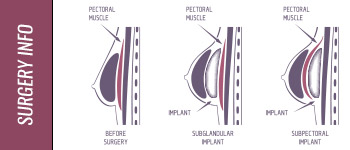TODAY, SOMEONE IS GOING TO MAKE A COMMITMENT
TO LOOK HEALTHY.
That doesn’t sound like a bad idea, does it? If you are ambivalent about the idea of cosmetic surgery, consider this: One way to be truly independent is to be completely satisfied with your physical appearance. And for many people, an abdominoplasty, or tummy-tuck, allows them to experience this newfound sense of freedom.
They are no longer shackled by the constant physical and emotional agony associated with their appearance because they’ve found a solution that works for them. For many people, this is their last hope, when diet and exercise has failed and they’re ready for a more permanent option with less long-term hassle.
So when the question is finally raised and a decision has to be made, understandably most people are anxious and realize they know very little about the difference between a mini-abdominoplasty and a full abdominoplasty, and which one is right for them. This article is intended to explain the fundamental differences between the two procedures.
MINI-ABDOMINOPLASTY
Medically speaking, a mini-abdominoplasty is used to correct problems of the lower abdomen, from the umbilicus to the pubic region. It corrects lower abdominal bulging, weakness of the lower muscle and fascia and localized obesity of this area.
Clear as mud? Simply put, a mini-abdominoplasty is used when there is localized fullness of the lower abdomen (as often seen after a pregnancy). The procedure, in this case may improve the appearance of stretch marks and provide a more aesthetically pleasing figure.
Generally speaking, mini-abdominoplasty patients are not significantly overweight, but they have concerns about the amount of deposits accumulated in the lower abdominal region or because a substantial weight loss has caused abdominal skin to become flaccid. In some instances the patients’ genetic make-up doesn’t favor their tight-tummy aspirations. In either of these situations, a mini-abdominoplasty should do the trick. However, most plastic surgeons will only perform a mini-abdominoplasty when no other good alternative exists.
FULL ABDOMINOPLASTY
With a full abdominoplasty, the patient’s goal is to tighten the entire abdominal region. It’s a far more extensive procedure than a mini-abdominoplasty but the benefits are virtually the same. The idea in both procedures is to tighten the skin by making a horizontal incision along the lower abdomen, undermining and stretching the skin upward. The doctor then expels excess skin and fat during this stretching action, ultimately stitching the patient at the point of the incision(s). Depending on the severity of the situation, often times an additional vertical incision is needed during a full abdominoplasty and a new navel will be formed giving the patient a new sleek lower waistline.
IT’S IMPORTANT TO KNOW
Although both procedures are done to tighten the loose skin of the abdomen and repair the weak muscles of the abdominal wall, a mini-abdominoplasty doesnot correct loose skin and weakness above the navel. Therefore it is important to understand how each procedure is done in order to make an informed decision with the help of the cosmetic surgeon.
QUESTIONS AND CONCERNS
As with any surgery, scaring will occur and because the abdominal region is rather large, the scar(s) will be quite long. Abdominoplasty scars take almost a year following surgery to achieve their final appearance.
Both procedures are done under either local anesthetic (awake) or general anesthetic (asleep). Most patients are happier asleep. And most of the time this is an outpatient procedure and a stay in the hospital is not needed.
Some of the most common risks include bleeding and bruising. As with any surgical procedure, the patient should strictly follow the surgeon’s guidelines so that damage and infection does not occur and a safe and full recovery can be insured.
It’s natural to feel tired during the first month of healing with either procedure as the body naturally supplies most of its energy towards the healing process. The abdominoplasty patient should not do any heavy lifting during this period. Light duties such as answering the phone or using a computer can be done after a week or so as the patient will begin to feel more liberated.
By eliminating the weakness in the abdominal area, the patient is eventually able to focus on strengthening the abdominal muscle walls which in turn may significantly reduce if not completely eliminate certain medical conditions associated with having excess weight in the abdominal region, such as chronic back pain, fatigue and emotional depression.
Read more articles about liposuction and body contouring.




